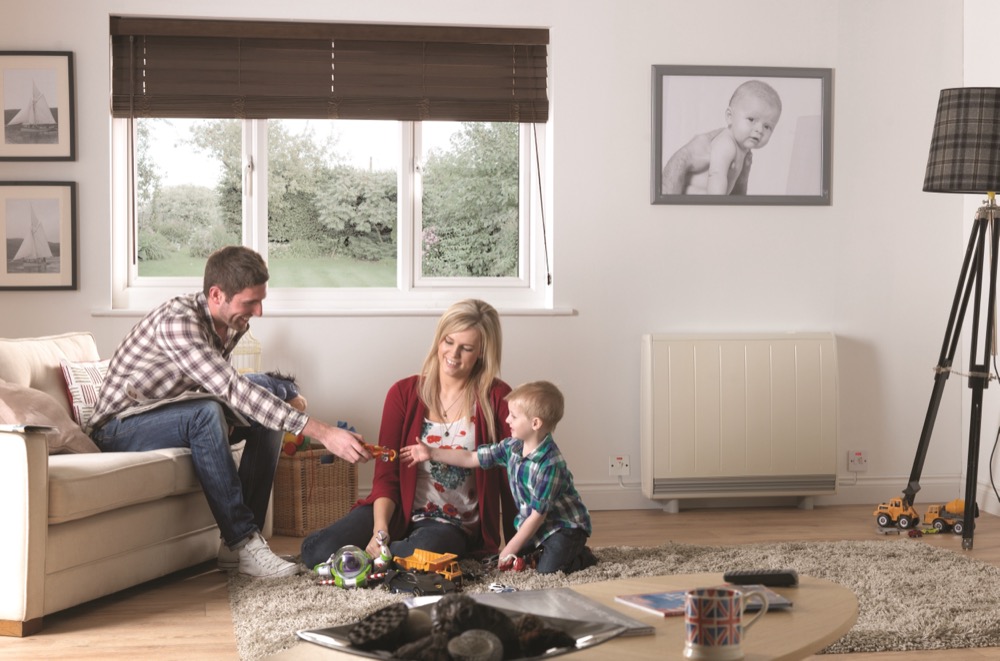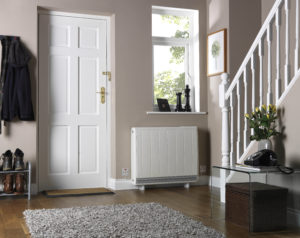
Chris Stammers, Product Marketing Director at Dimplex, explores the latest changes in energy policy, legislation and trends – and how they might impact on housebuilders.
Heating accounts for approximately 60% of the energy used in the home so it is clear to see why it is so important for housebuilders to make the right choice in a bid to keep costs down for their customers. With housebuilding back on the rise, the pressure is on to specify the right system.
When installing an electric heating system it is common to look at factors such as whether it is cost-effective, energy efficient and meets the specific requirements of the property and its occupants in terms of heat load, comfort and controllability. However, there is another critical factor that must be increasingly considered; energy policy.
Strict (and ambitious) carbon reduction commitments are already leading to some drastic changes to the way in which energy is generated, distributed and stored in the UK, not to mention Building Regulations. Government incentive schemes are also constantly evolving, but with so many changes it is not easy to keep up.
Here is a summary of some of the biggest issues – and how they could impact housebuilders and property developers.
Zero Carbon Homes
The UK’s original target was to achieve its Zero Carbon Homes standard for all new homes by 2016. This initiative has now been disbanded and replaced by a commitment by the EU that all new buildings will be ‘nearly zero energy’ from 1st January 2021.
The legislation is an ever-changing minefield and indeed Brexit may see commitment to this policy being weakened. For housebuilders, the fact remains that a continued drive towards more sustainable, better-insulated properties means the requirement for space heating in new homes in the future will be such that fitment of a boiler and radiator system will frequently be non-viable, and increasingly the preferred option will be to ‘go electric.’
Electricity generation
Despite the government’s seemingly non-committal stance on renewable energy, we remain committed to a number of national and international targets that will help to deliver a cleaner, more secure energy network. These include Roadmap 2050, which aims to future-proof electricity generation by decarbonising the Grid, and a pledge to close all coal-fired power stations by 2025.
All of this will inevitably increase our dependence on renewable energy sources and housebuilders must be aware of the latest technologies in order to help their customers take advantage.
On-site renewable heating solutions such as air source heat pumps and solar PV continue to drive interest, whilst heating systems with a quick response time, flexible operation and low installation costs are best suited to the decarbonisation of the Grid.
Smart Grid
The key to unlocking the potential of Smart Grid technology is to enable the consumer to realise the benefits and in order to fully exploit this, we really need smart meters – definitely one to watch for any housebuilder.
In the meantime, there are already a huge number of technological innovations available to developers that can give their customer greater control over energy use.
With quick warm up times and huge storage potential, electric heating products including hot water cylinders and space heaters offer some of the greatest potential for Smart Grid connectivity with demand side management.
 In particular, modern appliances like the unique Dimplex Quantum off-peak heating system can store large amounts of energy in the form of heat and use it far more efficiently by releasing it only when it is needed. It can operate on virtually any tariff, anticipates and will respond to behaviours of the user and requirements of the Grid, adapting accordingly. All of this delivers huge Smart Grid potential – particularly for large-scale housing projects.
In particular, modern appliances like the unique Dimplex Quantum off-peak heating system can store large amounts of energy in the form of heat and use it far more efficiently by releasing it only when it is needed. It can operate on virtually any tariff, anticipates and will respond to behaviours of the user and requirements of the Grid, adapting accordingly. All of this delivers huge Smart Grid potential – particularly for large-scale housing projects.
Ecodesign
The European Union’s Ecodesign Directive (2009/125/EC) sets out minimum mandatory requirements for the efficiency of certain products including household appliances, information and communication technologies. It is part of a continuing drive by the EU and its member states to replace energy-consuming products with more efficient models. The UK Government could now potentially alter or remove these requirements but, in order to supply product to the EU, British businesses will have to comply.
Energy tariff changes
This one does not directly influence housebuilders of course, but it could have a big impact on their customers depending on the heating system installed in their new home.
In March the Competition and Markets Authority (CMA) published details of its proposals to reform the energy market, open up competition and help customers get a better deal. The reforms made it easier for people to switch energy providers but they also removed the four tariff rule, which meant consumers could only choose from four core tariffs for electricity.
The rule was designed to make it easier for customers to choose a tariff, but in some cases, it was restricting off-peak tariffs and unfairly penalising electrically heated homes.
Now energy suppliers can design tariffs for specific customer groups and it opens the door for ‘time of use’ tariffs, which would ease Grid load balancing issues as well as benefitting those homes using off-peak electric heating appliances and electric hot water cylinders.








